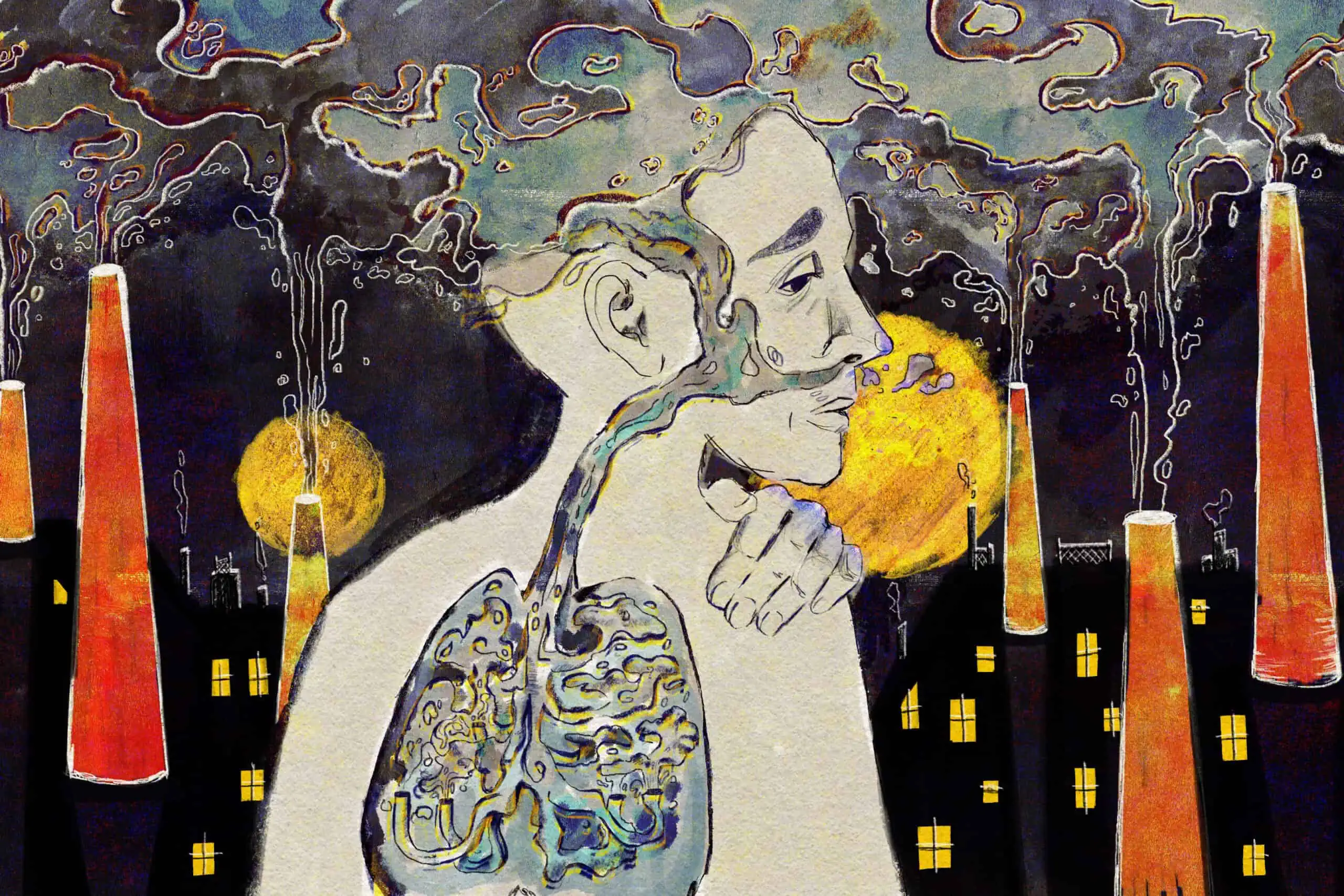According to three 2022 comprehensive research reviews, there is no scientific evidence for what we have long been told by psychiatry—and the mainstream media—about the neurobiology of depression. These reviews, in unison, will pack a powerful wallop for critical thinkers. However, for American society in general, the deck is stacked against any scientific truths making a dent in psychiatry’s brain-defect mythology.
The implications of these reviews are broken down in the following sections: (1) What We Have Been Told; (2) The Scientific Reality; (3) What Are the Variables Associated with Depression? and (4) The Stacked Deck against Scientific Realities Denting Brain-Defect Mythology.
What We Have Been Told
The general public has routinely heard proclamations from psychiatry authorities that depression is a neurobiological phenomenon (or a brain disease) caused by: (1) specific brain abnormalities revealed by neuroimaging; (2) neurotransmitter chemical defects, most commonly a “serotonin chemical imbalance”; and (3) identifiable genetic defects resulting in increased vulnerability to psychological-social stressors.
One example of what Americans hear from authorities is Harvard Medical School’s “What Causes Depression” (January 2022), which stated: “Major advances in the biology of depression include finding links between specific parts of the brain and depression effects, discovering how chemicals called neurotransmitters make communication between brains cells possible, and learning the impact of genetics and lifestyle events on risk and symptoms of depression.”

Photo by K. Mitch Hodge
The Scientific Reality
The most recent of the three reviews about the neurobiology of depression was published in October 2022 by Peter Sterling, Professor of Neuroscience at the Perelman School of Medicine, University of Pennsylvania, and it is titled: “A Neuroscientist Evaluates the Standard Biological Model of Depression.” Sterling examined the evidence for the theory that depression is “a brain disorder caused by some defect in a specific neural pathway,” and he concluded that “recent evidence from multiple sources [citing 44 journal publications] fails to support this hypothesis.” Published in the webzine Mad in America, Sterling summarizes his findings:
(1) Neuroimaging does not identify brain abnormalities in depressed individuals; neuroimaging does not even distinguish between large populations of depressed vs healthy.
(2) Genome-wide association studies identify hundreds of variants of small effect, but these do not identify a depressed individual, nor even a depressed population.
(3) The ‘chemical imbalance’ theory of depression has failed for want of evidence, thus depriving ‘antidepressant’ drugs of a neuroscientific rationale.
(4) Depression, while weakly predicted by any ‘biomarker,’ is strongly predicted by childhood trauma and chronic social stress.
The most powerful evidence that neuroimaging does not identify brain abnormalities associated with depression comes from a second 2022 review, published in the journal Neuron, co-authored by Raymond Dolan at the University College London —who is considered one of the most influential neuroscientists in the world.
Dolan and his co-authors, in “Functional Neuroimaging in Psychiatry and the Case for Failing Better,” conclude: “Despite three decades of intense neuroimaging research, we still lack a neurobiological account for any psychiatric condition”—which includes depression.
Reflecting on the more than 16,000 neuroimaging articles published during the last 30 years, Dolan and his co-authors concluded: “It remains difficult to refute a critique that psychiatry’s most fundamental characteristic is its ignorance. . . . Casting a cold eye on the psychiatric neuroimaging literature invites a conclusion that despite 30 years of intense research and considerable technological advances, this enterprise has not delivered a neurobiological account (i.e., a mechanistic explanation) for any psychiatric disorder, nor has it provided a credible imaging-based biomarker of clinical utility.”
While these reviews by prominent neuroscientists Peter Sterling and Raymond Dolan have received little public attention, a third 2022 review has garnered widespread media coverage. Titled “The Serotonin Theory of Depression: A Systematic Umbrella Review of the Evidence,” it was published in the journal Molecular Psychiatry, lead-authored by psychiatrist Joanna Moncrieff, at the University College London and co-chairperson of the Critical Psychiatry Network.
Moncrief and her co-researchers examined hundreds of different types of studies that attempted to detect a relationship between depression and serotonin, and concluded that there is no evidence of a link between low levels of serotonin and depression, stating: “We suggest it is time to acknowledge that the serotonin theory of depression is not empirically substantiated.”
Psychiatry apologists tried to convince the general public that Moncrieff’s findings were not newsworthy, and that psychiatry has long discarded the serotonin imbalance theory of depression. However, given the reality that the vast majority of society had heard nothing from psychiatry about the discarding of this theory, what followed has been public mockery of psychiatry and its Big Pharma partners for their duplicity.
Establishment psychiatry has employed a different strategy to deal with the finding that neuroimaging research has failed to provide a neurobiological account for any psychiatric condition, including depression. Psychiatry and the mainstream media have simply ignored this.
Also ignored is the finding that depressed individuals cannot be identified by their genes. Sterling notes in his review, “A great hope for the Human Genome Project around 2003 was to identify key genetic variants that ‘cause’ mental ‘disorders.’” However, no such genetic variants have been identified.
Given the twentieth-century history of eugenics, and how it was used to justify sterilization in the United States—and murder in Nazi Germany—of individuals diagnosed with mental illness, the recent genetic push should be troubling. History tells us that if genetic causality theories are taken seriously, and a nation’s need for efficiency and productivity trumps toleration for individual differences, then such a nation will seek to eliminate inefficient and nonproductive people, including the seriously depressed. Thus, if a society believes that severe behavioral disturbances and emotional suffering are rooted in genetics, and if such a society embraces the type of fascism embraced by Nazi Germany, history tells us what happens next.
Sterling is not only a prominent neuroscientist but a longtime social justice activist who, as a young man, participated in the Freedom Rides. Owing to his understanding of the political implications of biological theories of psychiatry, scientific truths about genetics and depression are for him no small deal.
One of several studies that debunk the idea that there are genetic variants that can be used to identify depression mentioned in Sterling’s review is a 2021 investigation published in the Journal of Affective Disorders that included 5,872 cases and 43,862 controls, and which examined 22,028 gene variants. The authors reported that the study “fails to identify genes influencing the probability of developing a mood disorder” and “no gene or gene set produced a statistically significant result.”
What Are the Variables Associated with Depression?
Twelve biological measures [including structural magnetic resonance imaging (MRI), task-based functional magnetic resonance imaging (fMRI), resting state fMRI, and nine other biological measures] fail to distinguish ‘depressed’ from ‘healthy’ populations,” reports Sterling, “but two psychological variables clearly do so . . . . Depressed individuals were far more likely to report childhood trauma and far less likely to experience social supports.
Once upon a time, it was not extraordinary for psychiatrists to actually spend time learning about their patients’ lives. However, as the New York Times reported in 2011 (“Talk Doesn’t Pay, So Psychiatry Turns Instead to Drug Therapy”),“A 2005 government survey found that just 11 percent of psychiatrists provided talk therapy to all patients, a share that had been falling for years and has most likely fallen more since.”
Today, it is a very unique psychiatrist—likely a “dissident psychiatrist”—who offers anything other than medication management (“med management” consists of 10 to 15 minutes every two or three months, checking symptoms and tweaking medications). The vast majority of psychiatrist offer nothing but biochemical-electrical attempts to reduce symptoms.
If one actually spends time with depressed people, it is obvious that the common ingredient they share is some type of overwhelming pain, and if one spends even an hour listening to most depressed individuals, it is not all that difficult to discover the source of that pain.
Some of the most common overwhelming pains include: severe chronic physical pain (e.g., rheumatoid arthritis or bone cancer); severe financial pain (e.g., bankruptcy, unemployment, and poverty); legal pains (e.g., parole, probation, and other involvements in the criminal justice system); severe interpersonal pains (e.g., isolation, a miserable marriage, or a lengthy ugly divorce); unhealed trauma (from childhood and elsewhere); and overwhelming existential pains (e.g., meaninglessness, directionlessnes, and lost integrity).
A generation ago, it was well known that transforming interpersonal pains was often helpful to many depressed patients. The Interactional Nature of Depression (1999) documents hundreds of studies about the interpersonal nature of depression—and its interactional vicious cycle. In one study of unhappily married women who were diagnosed with depression, 70 percent of them believed that their marital discord preceded their depression, and 60 percent believed that their unhappy marriage was the primary cause of their depression.
The majority of Americans are unaware that socioeconomic variables are associated with depression. Results from a 2013 national survey issued by the U.S. government’s Substance Abuse and Mental Health Services Administration (SAMHSA) included socioeconomic correlates of depression and suicidality (serious suicidal thoughts, plans, or attempts). The survey results provide extensive evidence that unemployment, poverty, and involvement in the criminal justice system are highly associated with depression and suicidality.
The Stacked Deck against Scientific Realities Denting Brain-Defect Mythology
The focus on biochemical-electrical causality rather than other variables is—as I detail in A Profession Without Reason—a political and financial win for several groups:
(1) Pharmaceutical companies. The now discarded serotonin imbalance theory of depression has been powerfully persuasive for many depressed individuals and their doctors, resulting in the belief that it would be irresponsible not to use selective serotonin reuptake inhibitors (SSRIs) antidepressants such as Prozac, Zoloft, or Paxil. In 2001, CNN reported: “Since it was launched in early 1988, Prozac has been one of the biggest-selling drugs in history; its $21 billion in sales represents some 30% of Lilly’s revenues in that period.” Since 2001, blockbuster SSRI drugs—as well as other antidepressants that have been claimed to correct other non-existent chemical imbalances—have continued to make billions of dollars for drug companies.
(2) Mainstream Media. By 2019, according to MediaRadar, Big Pharma’s $6.6 billion yearly spending on TV adsranked it as the fourth-largest spender of TV ads in the United States. Television is only one segment of mainstream media in which Big Pharma is buying advertising. Given that the mainstream media is dependent on these Big Pharma advertising dollars, it is majorly disincentived from doing serious investigative journalism on Big Pharma and its drugs.
3) Drug prescribers and psychiatrist “thought leaders.” One of many “thought-leader” psychiatrists exposed by 2008 Congressional hearings was Harvard psychiatrist Joseph Biederman (credited with creating pediatric bipolar disorder), who had received $1.6 million from drug makers between 2000 to 2007. Federal legislation enacted in 2013 required pharmaceutical companies to disclose their direct payments to physicians, resulting in the creation of an Open Payments database. In 2021, utilizing this database, independent journalist Robert Whitaker reported: “From 2014 to 2020, pharmaceutical companies paid $340 million to U.S. psychiatrists to serve as their consultants, advisers, and speakers, or to provide free food, beverages and lodging to those attending promotional events.” Open Payments lists 31,784 psychiatrists (roughly 75 percent of the psychiatrists in the United States) who, Whitaker noted, “received something of value from the drug companies from 2014 through 2020.” During that time period, sixty-two psychiatrists received one million dollars or more; nineteen psychiatrists received over two million dollars.
(4) Mental illness institutions such as the American Psychiatric Association (APA) and so-called “patient advocacy” groups such as the National Alliance on Mental Illness (NAMI) have received funding from Big Pharma. As major money is available from the National Institute of Health’s (NIH) “Brain Initiative,” the National Institute of Mental Health (NIMH) has focused on biochemical-electrical causality (in June 2022, the NIMH’s “Strategic Plan” for the next five years listed Goal #1: Define the Brain Mechanisms Underlying Complex Behavior).
(5) Researchers who are funded to do biochemical-electrical research.
(6) Those atop the societal hierarchy who obviously prefer retaining the social-economic-political status quo, and who know that if a population believes its emotional suffering is caused not by social-economic-political variables but instead by neurobiological defects, this belief system can be a more powerful and less expensive way of maintaining the status quo than a heavily armed police force.
There is another reason why the scientific realities made clear by these three comprehensive reviews will not likely make a dent in the brain-defect mythology of depression. When individuals are overwhelmed by pain and become depressed, it is difficult for them and their frightened family to think critically. When the mainstream media offers themonly two explanation options for their depression—biochemical-electrical causality or personal blame—of course, they prefer biochemical-electrical causality. When illegitimate authorities offer two options, critically-thinking anti-authoritarians know to choose the third one; but depressed individuals and their families often have too much fear and too little energy to think critically and to resist illegitimate authorities.
Debunk of Chemical Imbalance Theory of Depression
Now that psychiatry has publicly acknowledged the lack of evidence behind its chemical imbalance theory of depression, antidepressant drugs have publicly lost their neuroscientific rationale. However, psychiatry has pivoted to the proclamation that a lack of neuroscientific rationale for antidepressant drugs is “irrelevant” (a word used by establishment psychiatrist Ronald Pies), because antidepressants are effective. What is the scientific reality?
Some individuals report their antidepressants have provided them with symptom relief; others report no effect; and still others report extremely unpleasant adverse effects and nightmarish withdrawal. A 2022 large study, lead-authored by Marc Stone at the FDA’s Center for Drug Evaluation and Research, examined 232 randomized, double blind, placebo controlled trials on antidepressants (these trials were submitted by drug companies to the FDA between 1979 and 2016, comprising 73,388 adult and child participants). Even in these drug-company submitted studies, Stone and his co-researchers found that only “15% of participants have a substantial antidepressant effect beyond a placebo effect.”Moreover, drug company antidepressant trials submitted to the FDA are routinely short-term studies, usually around six weeks.
In the long-term, outcomes are worse. In 2017, the journal Psychotherapy and Somatics, in “Poorer Long-Term Outcomes among Persons with Major Depressive Disorder Treated with Medication,” reported the following: Controlling for depression severity, the outcomes of 3,294 subjects over a nine-year period showed that antidepressants may have had an immediate, short-term benefit for some people, but at the nine-year follow-up, antidepressant users had significantly more severe symptoms than those individuals not using antidepressants.
In 2022, the Clinical Psychology Review summarized the antidepressant reality: “The increased availability of effective treatments should shorten depressive episodes, reduce relapses, and curtail recurrences. . . . Have these reductions occurred? The empirical answer clearly is NO.”
Psychiatrist Thomas Insel, NIMH director from 2002 to 2015, acknowleded in 2017: “I spent 13 years at NIMH really pushing on the neuroscience and genetics of mental disorders, and when I look back on that I realize that while I think I succeeded at getting lots of really cool papers published by cool scientists at fairly large costs—I think $20 billion—I don’t think we moved the needle in reducing suicide, reducing hospitalizations, improving recovery for the tens of millions of people who have mental illness.” Yet, establishment psychiatry has doubled-down in their quest for a neurobiological magic bullet; Insel states in his 2022 book Healing: “The idea of mental illness as a ‘chemical imbalance’ has now given way to mental illnesses as ‘connectional’ or brain circuit disorders.”
As Upton Sinclair famously said, “It is difficult to get a man to understand something when his salary depends on his not understanding it.”

Offered by our Wellcare World friend at
Trending Also -> Physiotherapy Terahertz Technology TeraMD
Wellcare World specializes in providing the latest advancements in wellness technology, supplementation, and lifestyle changes that improve health and increase the quality of people's lives. To learn more, visit WellcareWorld.com and begin living a better life today.
Share Us With Others








